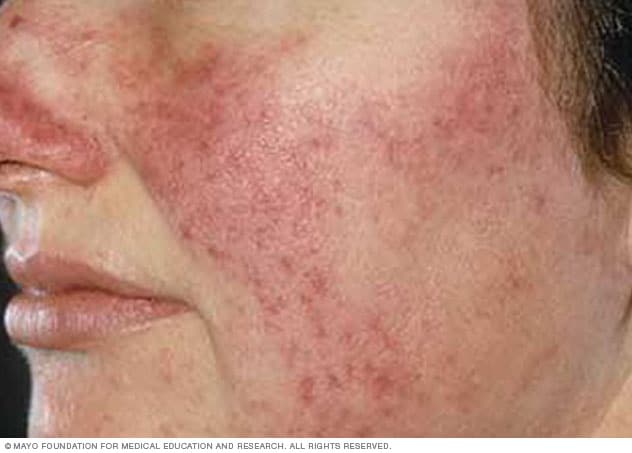Rosacea (roe-ZAY-she-uh) is a common
skin condition that causes blushing or flushing and visible blood vessels in
your face. It may also produce small, pus-filled bumps. These signs and
symptoms may flare up for weeks to months and then go away for a while. Rosacea
can be mistaken for acne, other skin problems or natural ruddiness.
Rosacea can affect anyone. But it's most
common in middle-aged white women. There's no cure for rosacea, but treatment
can control and reduce the signs and symptoms.
SIGN & SYMPTOMS
- Facial blushing or flushing. Rosacea can
cause a persistent blushing or flushing in the central part of your face. This
sign of the condition may be difficult to see on brown and Black skin.
- Visible veins. Small blood vessels of
your nose and cheeks break and become visible (spider veins).
- Swollen bumps. Many people with rosacea
also develop pimples on their face that resemble acne. These bumps sometimes
contain pus.
- Burning sensation. The skin of the
affected area may feel hot and tender.
- Eye problems. Many people with rosacea
also experience dry, irritated, swollen eyes and eyelids. This is known as
ocular rosacea. In some people, the eye symptoms precede the skin symptoms.
- Enlarged nose. Over time, rosacea can
thicken the skin on the nose, causing the nose to appear bulbous (rhinophyma).
This occurs more often in men than in women.
